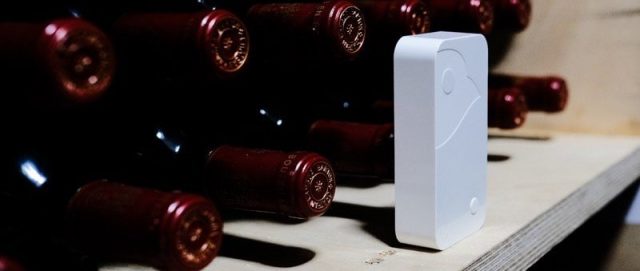How does Sensorist work?

How does Sensorist work
One may ask how does Sensorist work? Well, before we begin. Have you had any trouble finding a solution to monitor the temperature and humidity of your fridge, industrial freezer, or any other temperature-sensitive items? Well, look no further as we introduce to you a simple yet effective and cost-friendly temperature and humidity monitoring system that will change the way LIVE temperature and humidity monitoring works.
So, one may ask what is Sensorist, what is so good about Sensorist and how does it work? In layman’s terms, Sensorist is a technology-changing temperature and humidity monitoring system that is applicable for a wide range of activities from simple monitoring of your very own wine cellar to a complex industrial building. Sensorist can do it all.
To begin, Sensorist works by having a gateway and a sensor. In each set or bundle, a plug to power the gateway, a LAN point, a Gateway, and a sensor is provided to kickstart your monitoring journey with Sensorist.
To set up Sensorist system first, the gateway has to be plugged into a socket to power it up. It also has to be connected to a LAN point as the gateway will act as the “brain” of the system. After the gateway is powered up we will then have to connect the sensor to the gateway via radio frequency or RF.
Now, you may think won’t radio frequency interferes with any of our electronics. The answer is no, using radiofrequency or RF as a connection will not affect any of your electronics even your walkie-talkie. Plus, connection with radiofrequency or RF is much stronger than using WiFi. In an open area, Sensorist’s Gateway and Sensor can be placed up to 900m apart and still be able to record.
Once everything is in working order, you can now begin to live monitoring your temperature and humidity. Since Sensorist has both a mobile app and computer software for you to configure your settings. You will receive notifications on both your mobile application and email if there is a breach of temperature or humidity. Mobile app and email notifications will also be activated if the battery of the sensor is low or a disconnection happens. However, fret not the sensor’s batteries would last around 2 years of use depending on the frequency of the reading.
So, how Sensorist system works on the Sensorist Cloud System is as follows. Once the sensor starts recording the environment’s temperature and humidity it then transmits its data to the gateway via radiofrequency. Once the gateway receives the data it then transmits the data to Sensorist’s cloud. Thus, you have the ability to recheck old data that has been recorded years back.
Users can also attach an external probe to monitor liquid temperatures or place the probe into a fridge or freezer to monitor the temperature while the sensor is still outside of the enclosed area. This would come in handy as a gateway can pair up to 99 sensors and all temperatures could be monitored via a mobile app or desktop website.
Case Study – Food distribution company
An example of Sensorist being used would be in a Food Distribution Company. Food Company A wants to have a monitoring system for 15 of its industrial freezers and chillers. As they realized that if they do not have a temperature monitoring system, accidents may occur without them knowing.
Such as a staff forgetting to close the door properly or if there is an electrical outage. This would be costly for them as their inventory would be damaged. In this case, Sensorist would be perfect for their application.
After a site visit, we noted that their chillers and freezers were located side by side to one another and all we needed was one gateway to connect all the sensors. Usually, the number of gateways varies from case to case as each company’s freezers and chillers are located at different locations. This also includes the availability of a LAN point and a socket to power the gateway.
To further make the system more effective probes were attached to the sensors and only the probes were placed into the freezer or chiller while the sensor is located outside. Even though, the temperature and humidity sensor itself is able to withstand temperatures up to -30 °C. It would be better to locate the sensor outside as we would be able to use fewer gateways, in which this case was only 1 gateway.
The reason for this is that the walls on the freezer and chillers are thick and once the sensor is placed inside, the connection level would be around 5-15% between the gateway and the sensor. Even though a connection level of anything above 5% is perfectly fine, sensors in the freezers or chillers that are located further away from the gateway may lose the connection because of this.
Once the sensors, gateway, and probes were in place Food Company A was able to start live monitoring and record the temperature of their freezers and chillers. The data would all be on one computer software that is easy to use and user-friendly. The data then can be viewed and printed via the software. The users are also able to set their temperature and humidity breach to receive alerts which is what Food Company A made their operations hassle-free and one less thing to worry about.
On that note, we will be ending our case study. If you have any questions regarding Sensorist’s temperature and humidity monitoring system or any of our products, feel free to contact us via email or contact form and we will get back to you as soon as possible.

